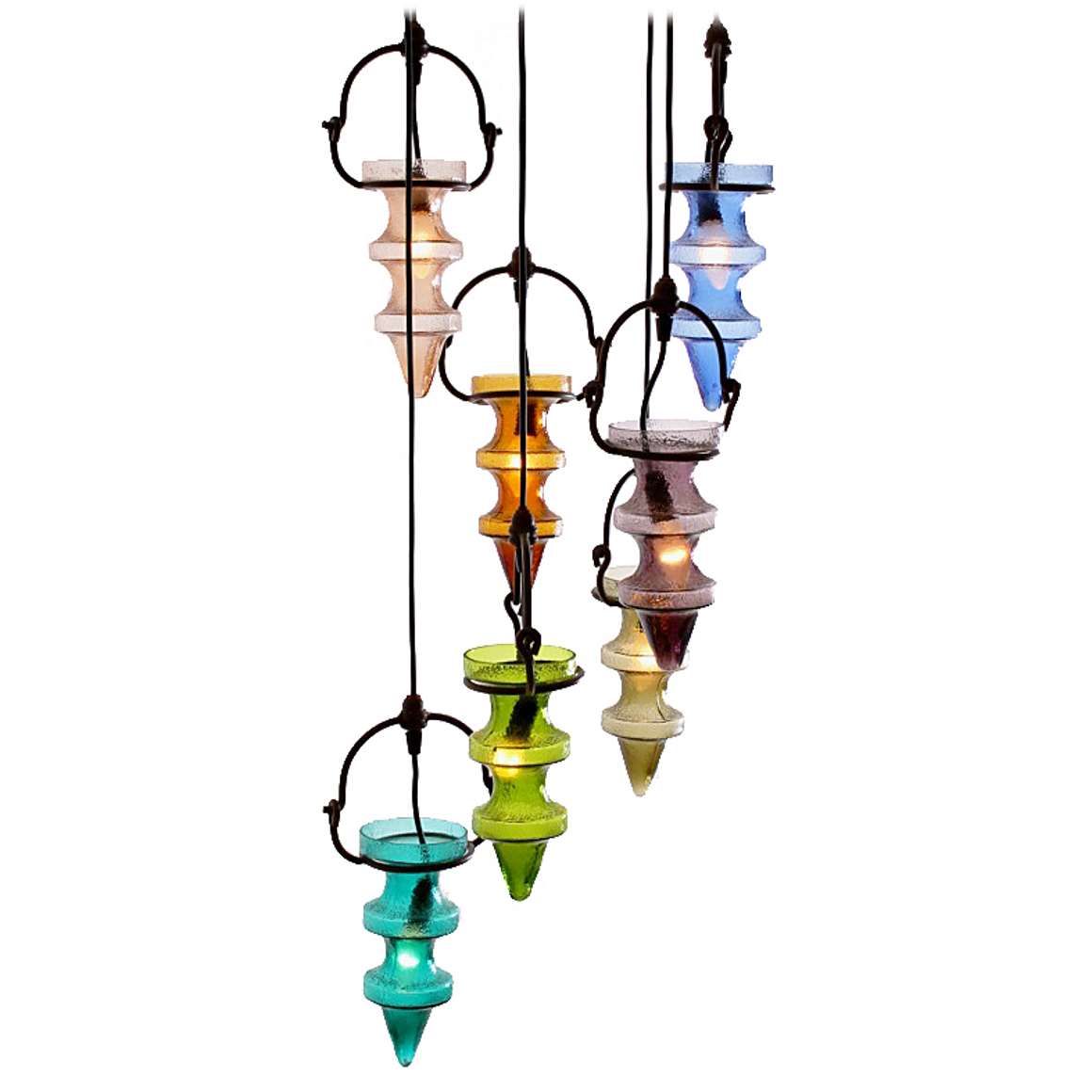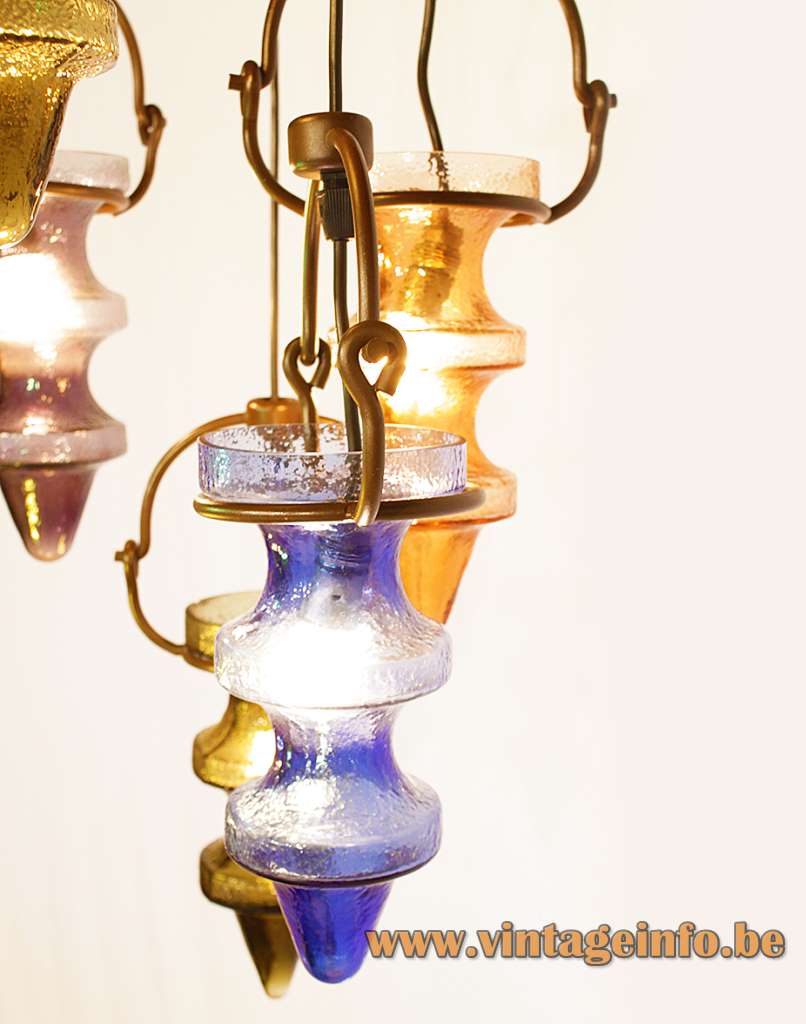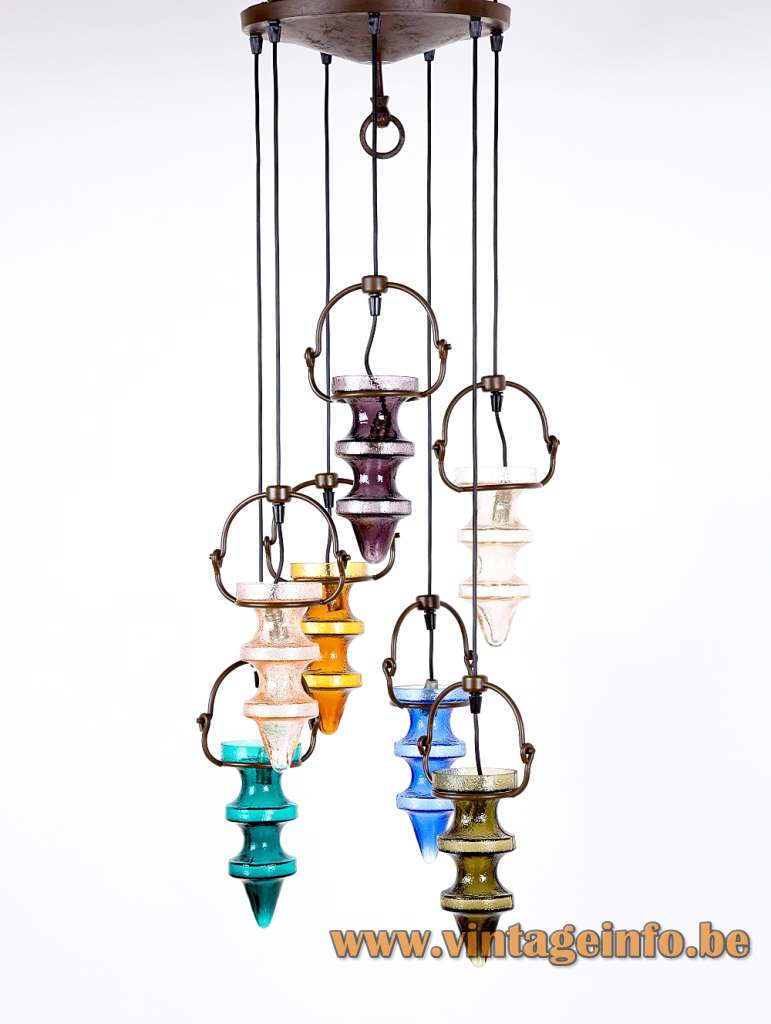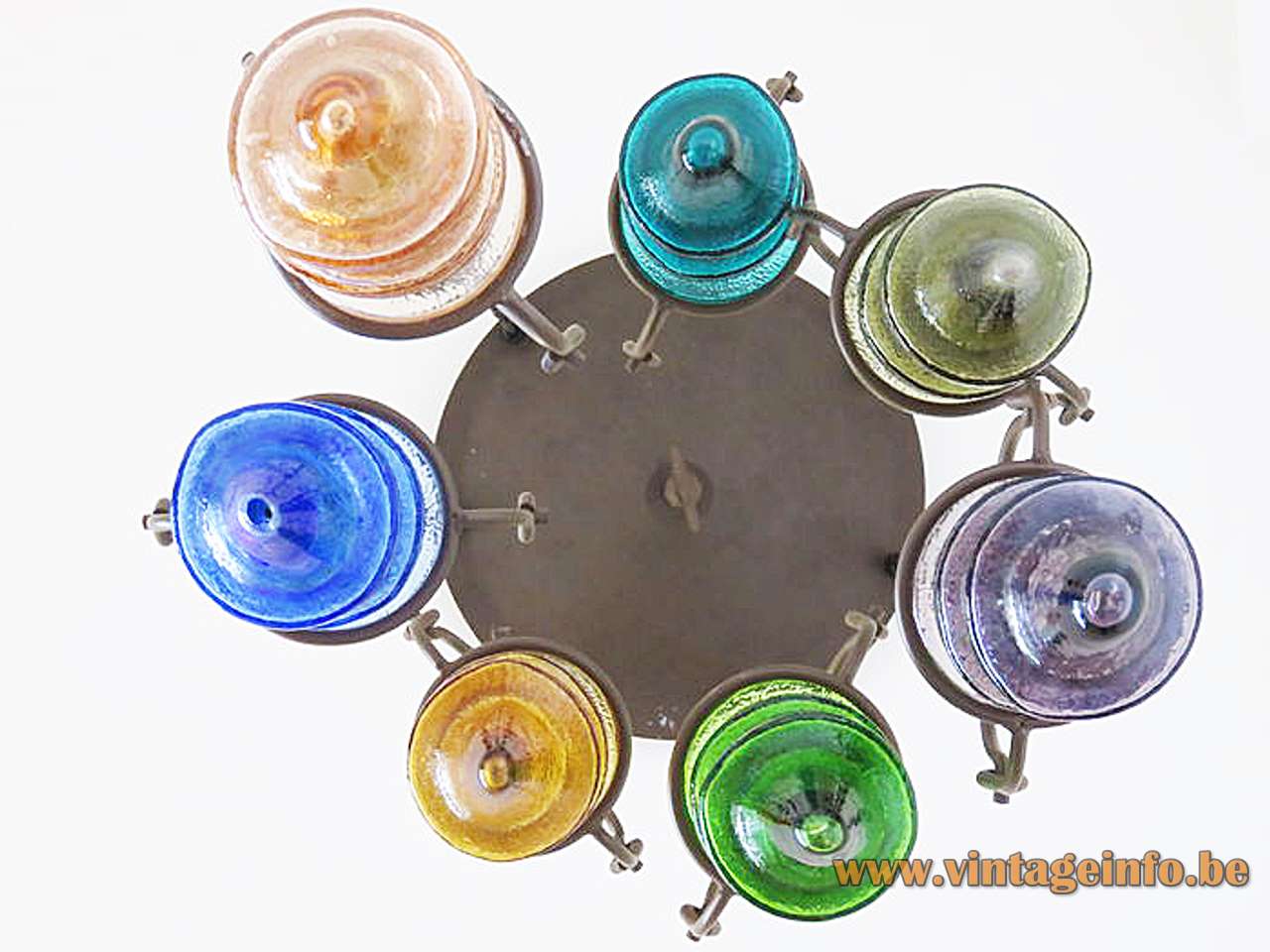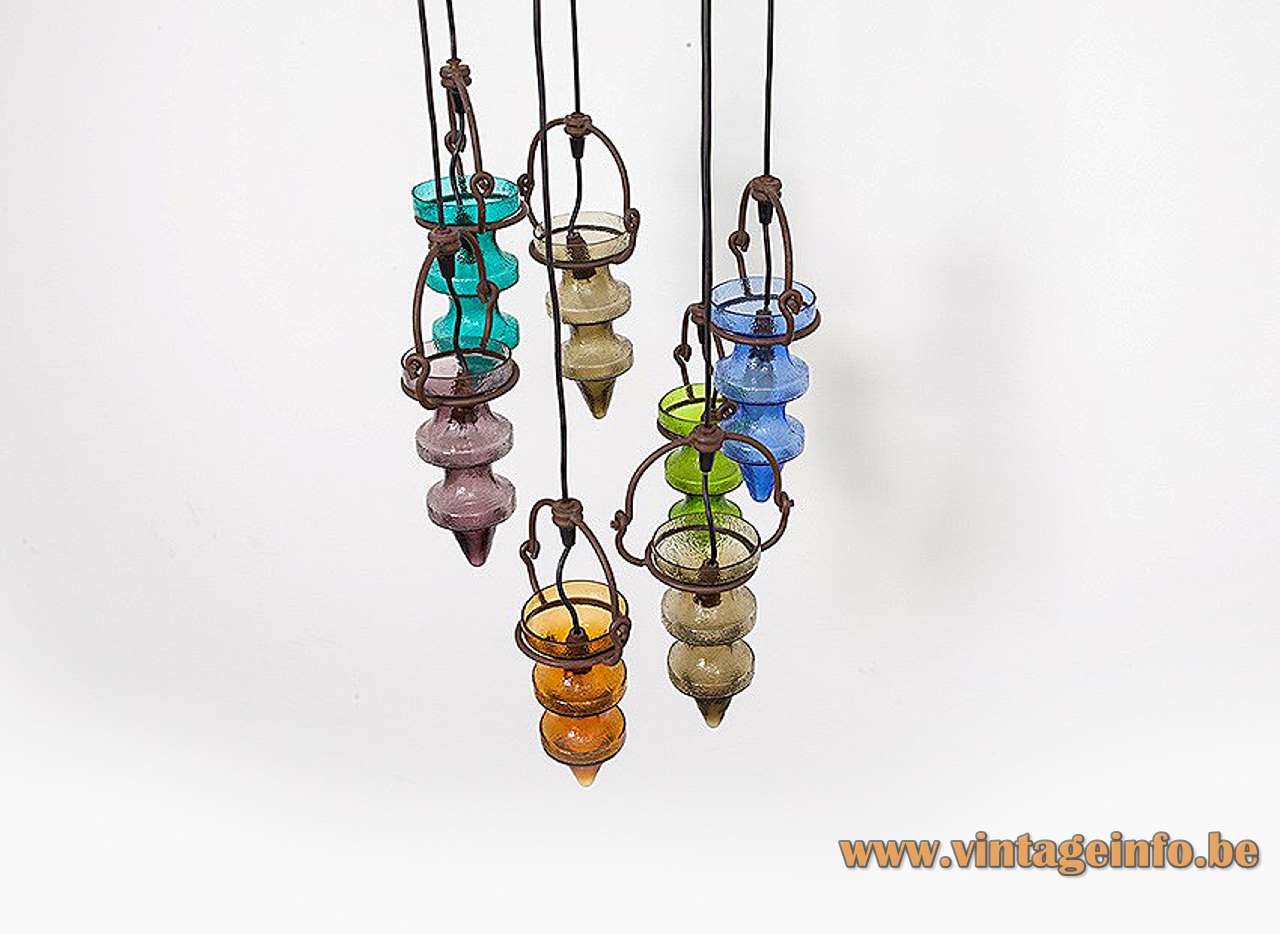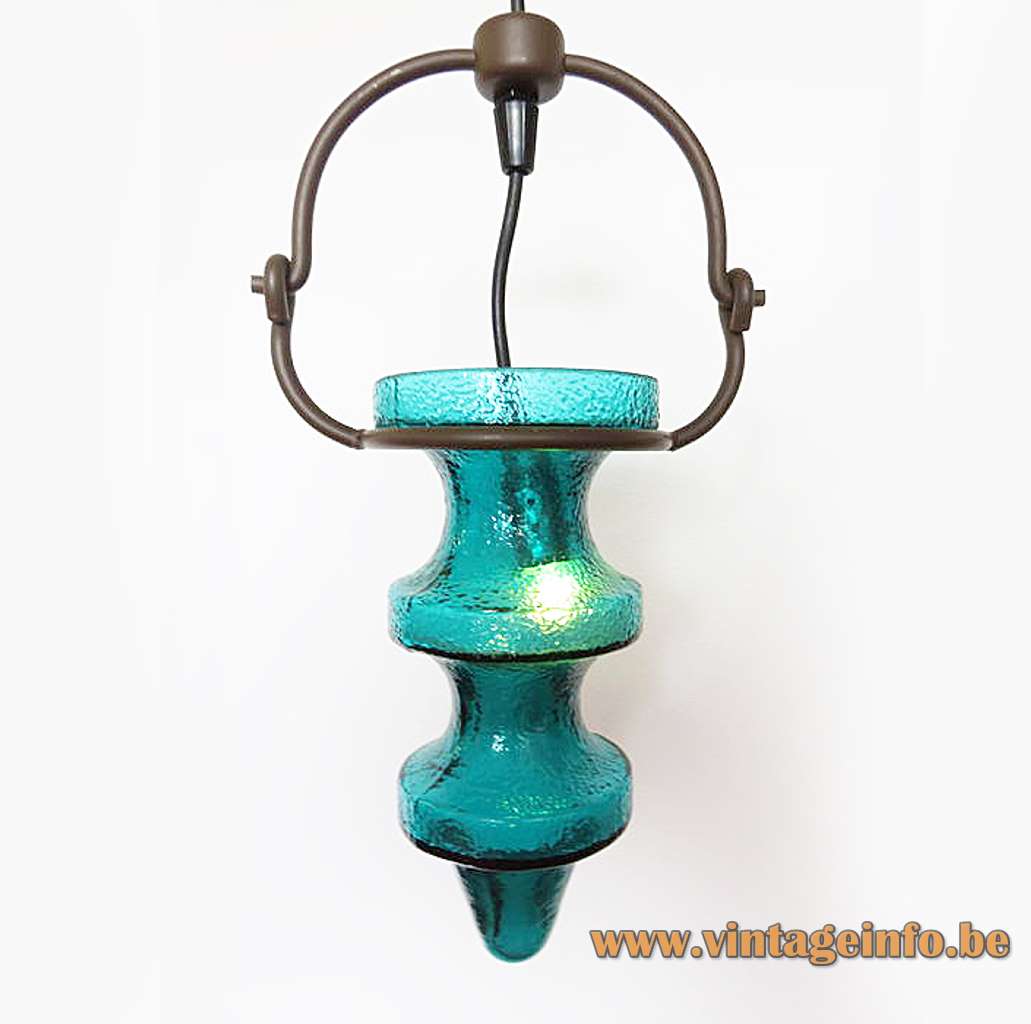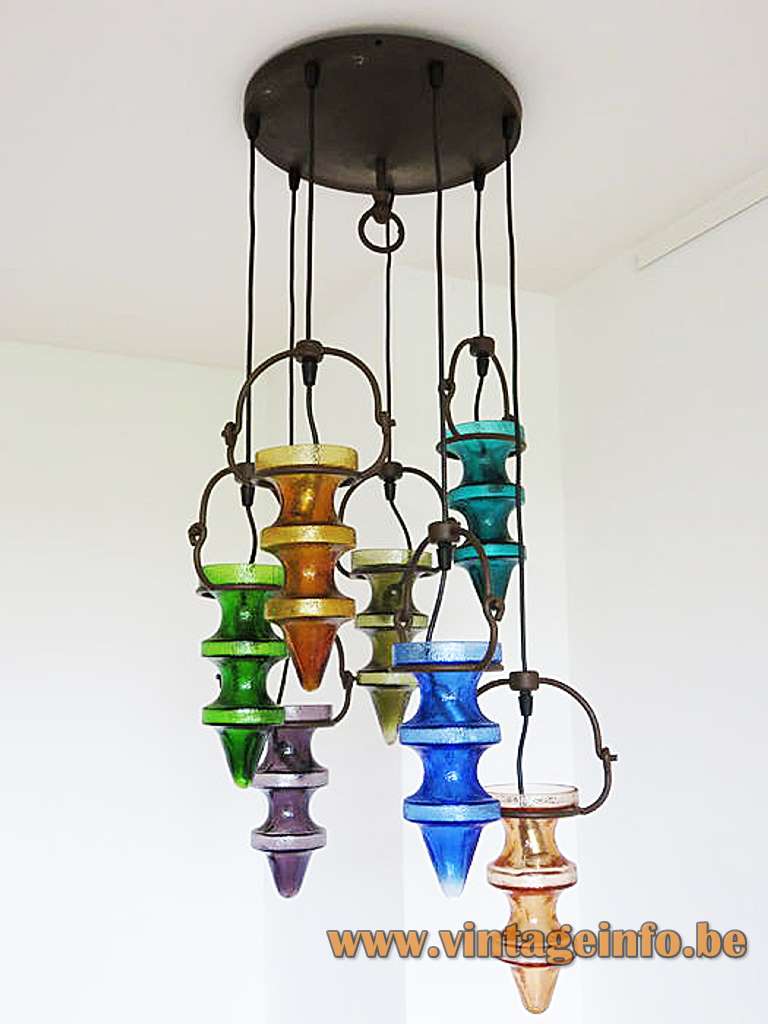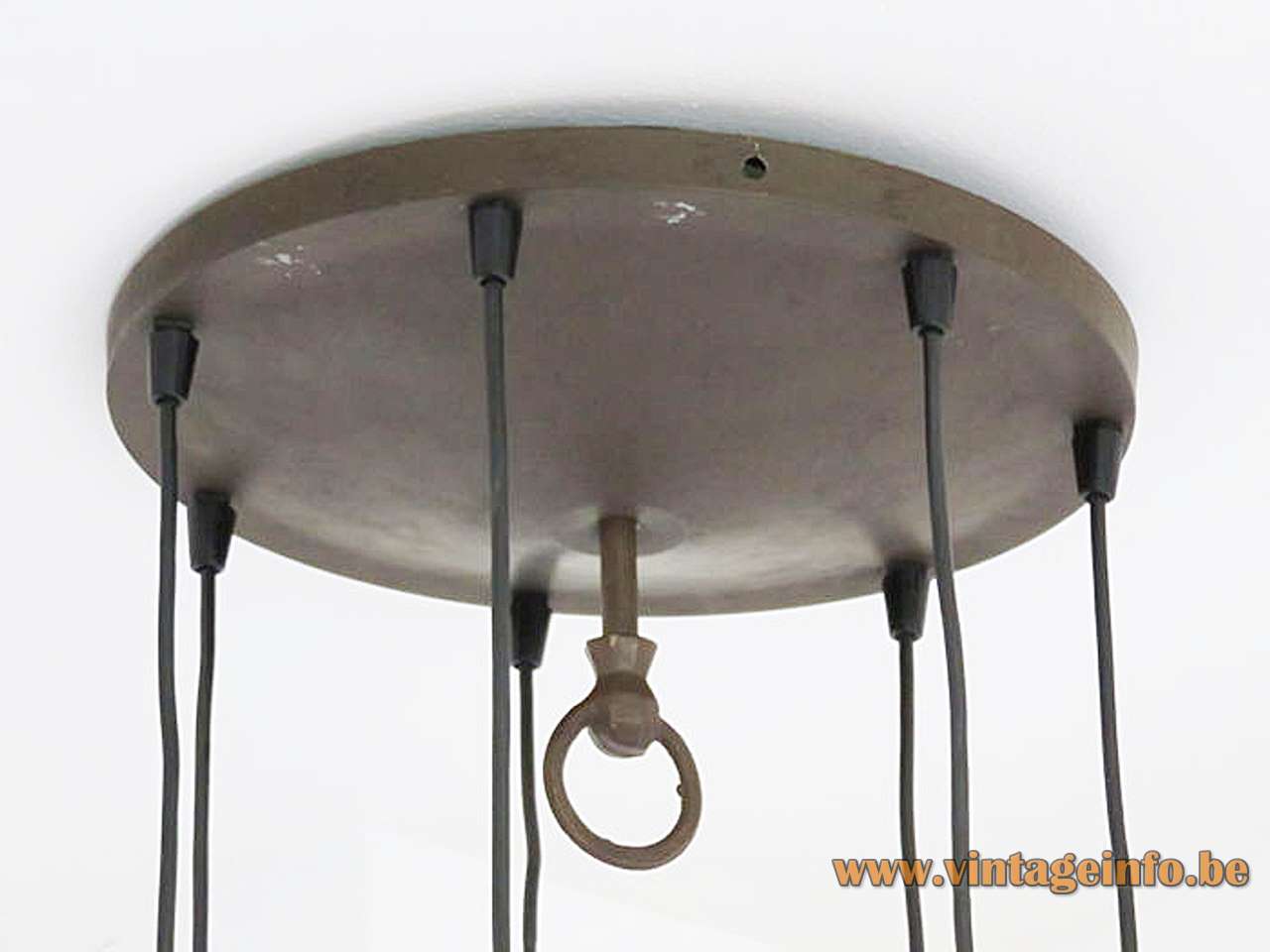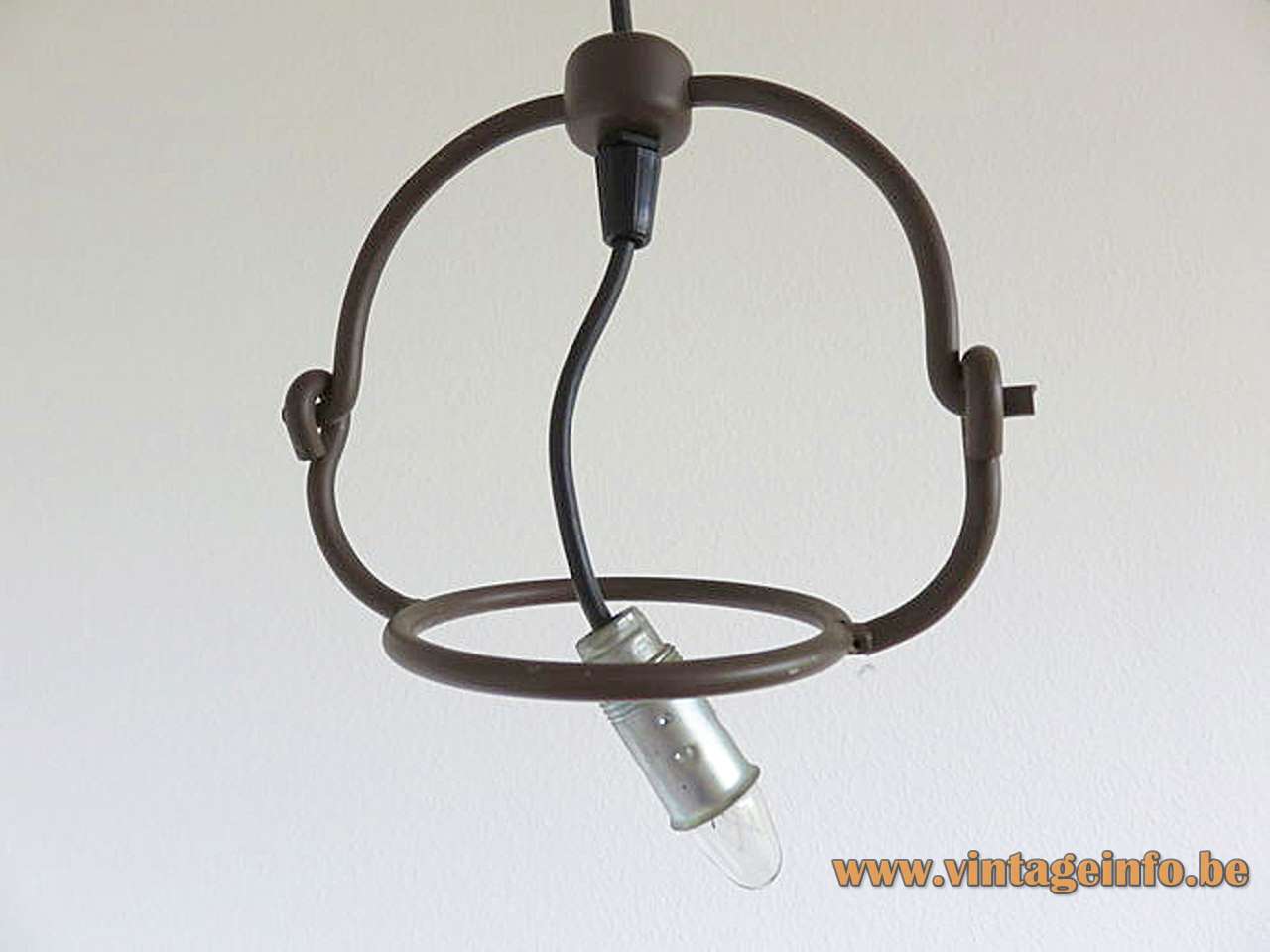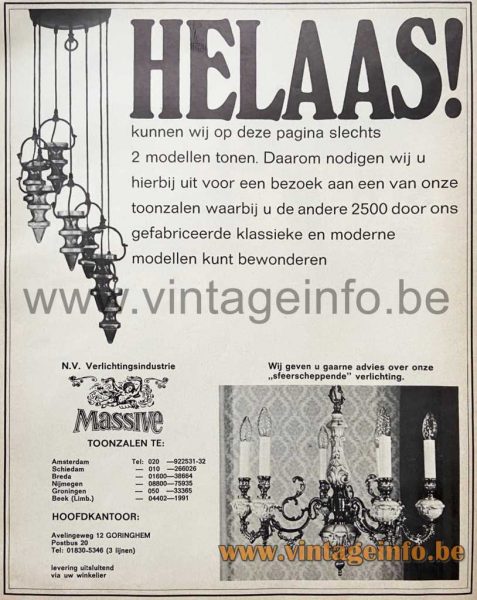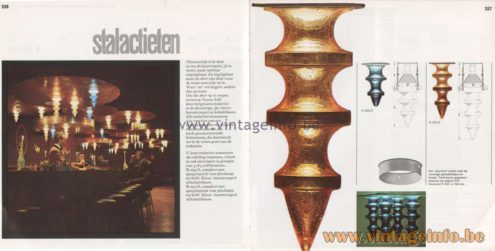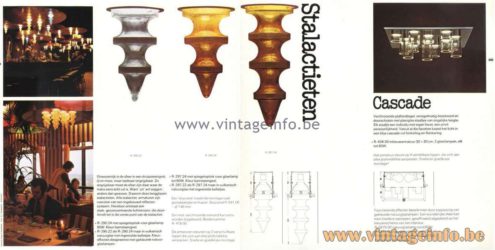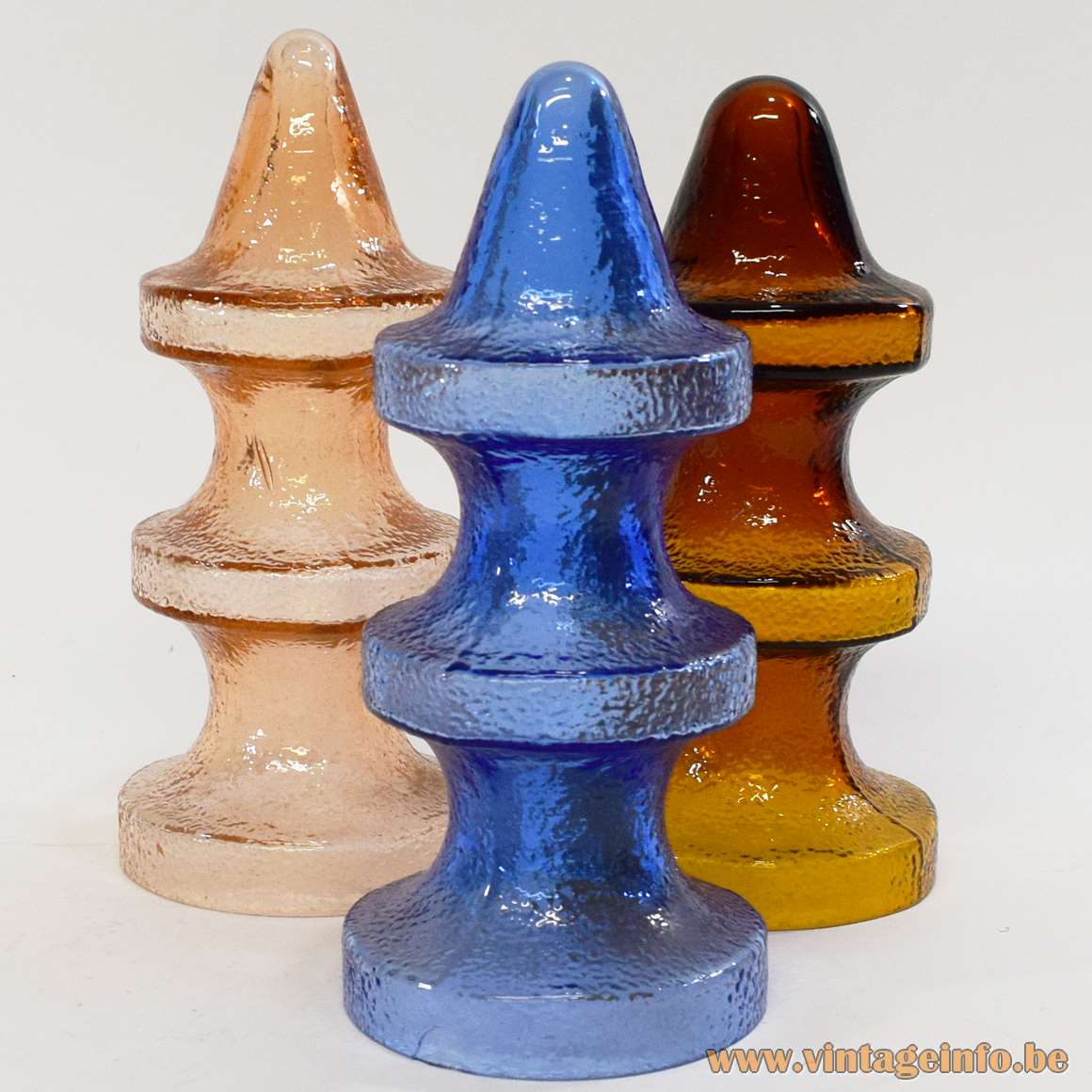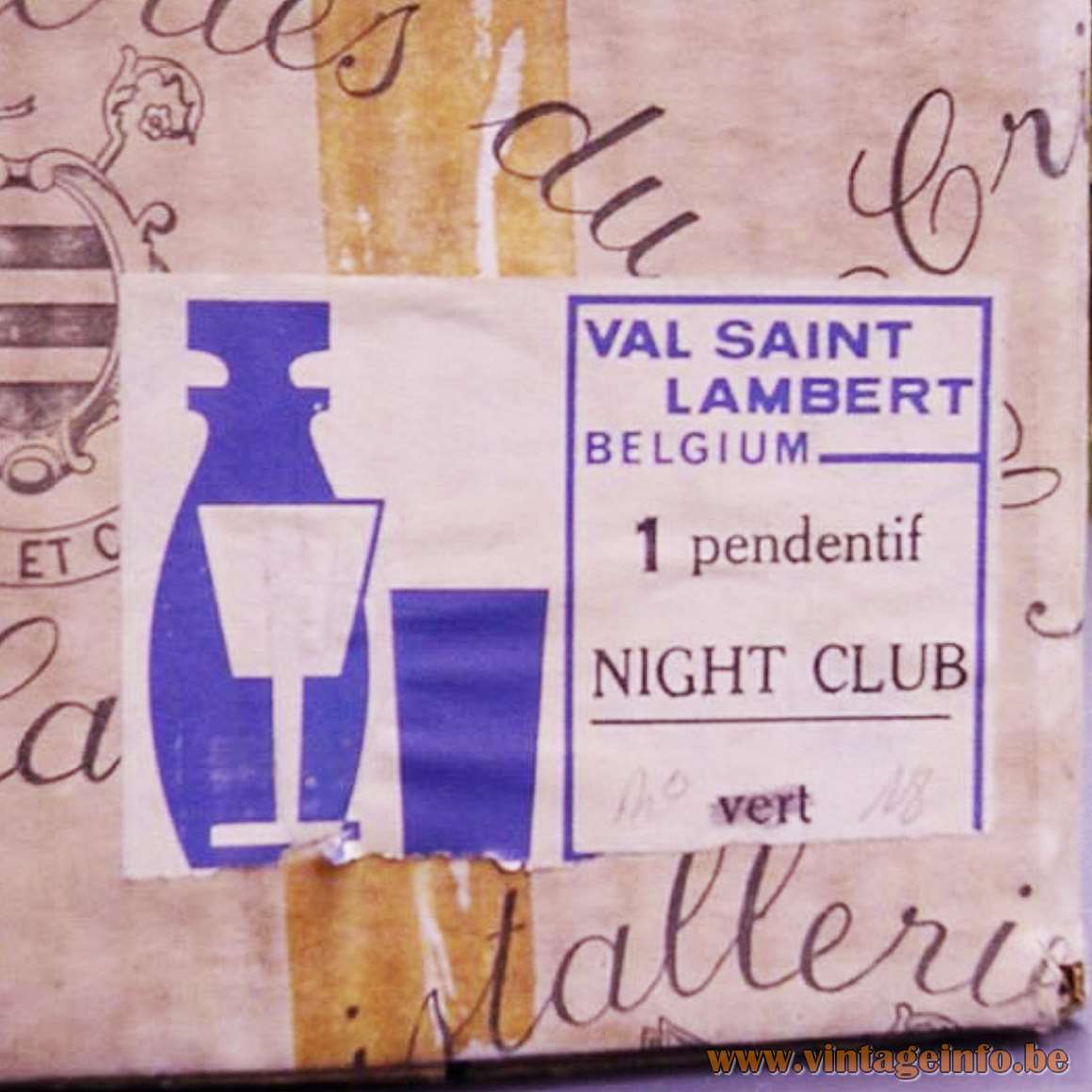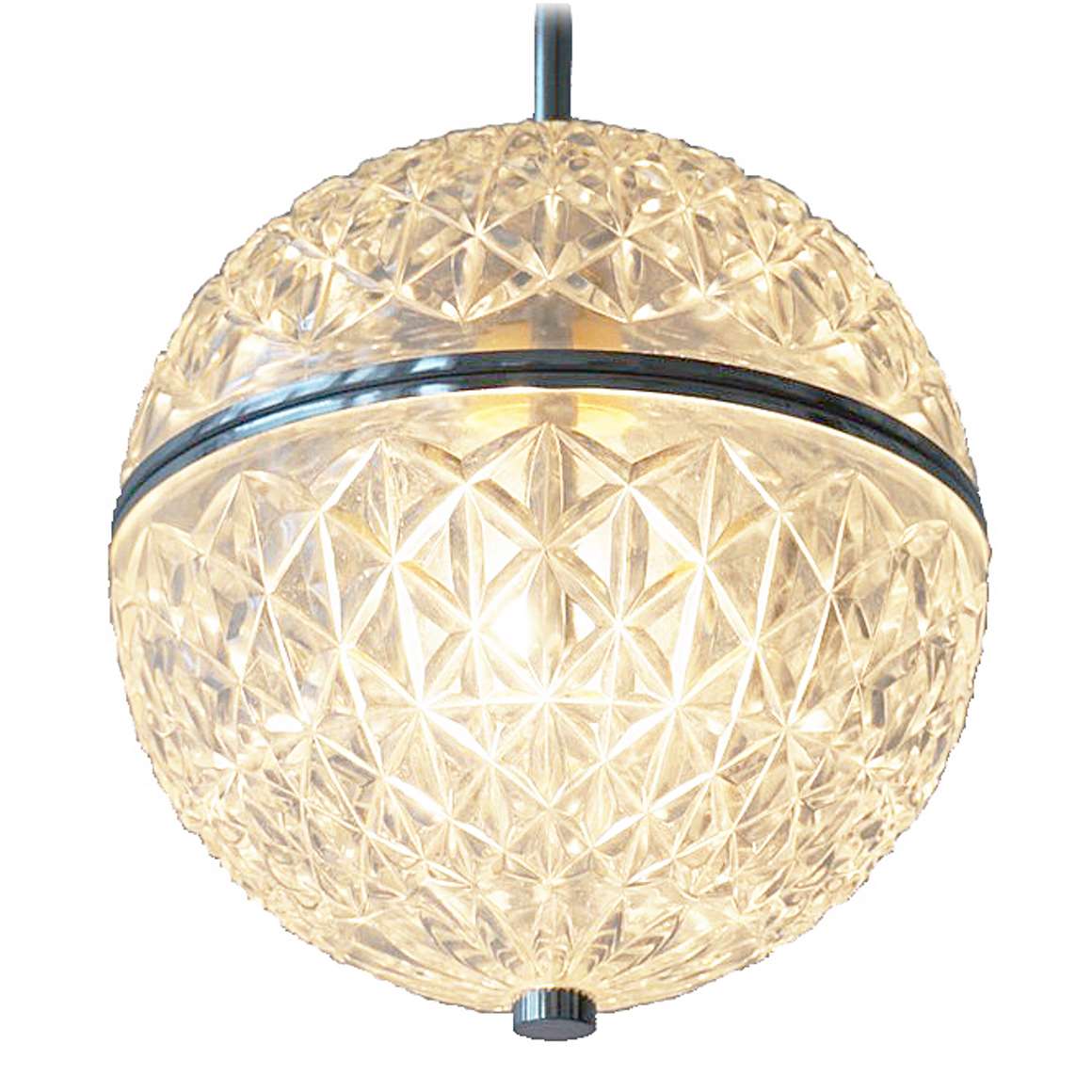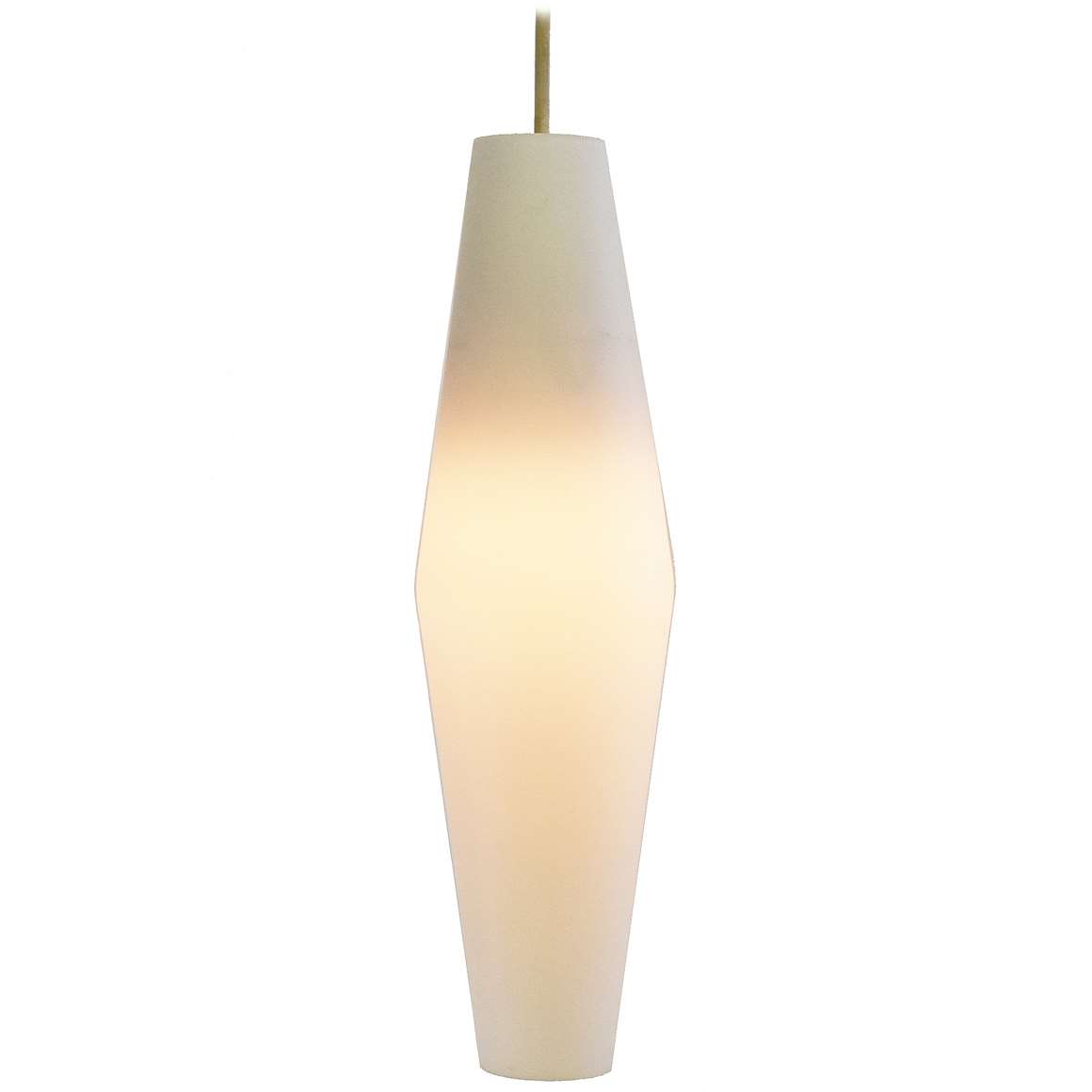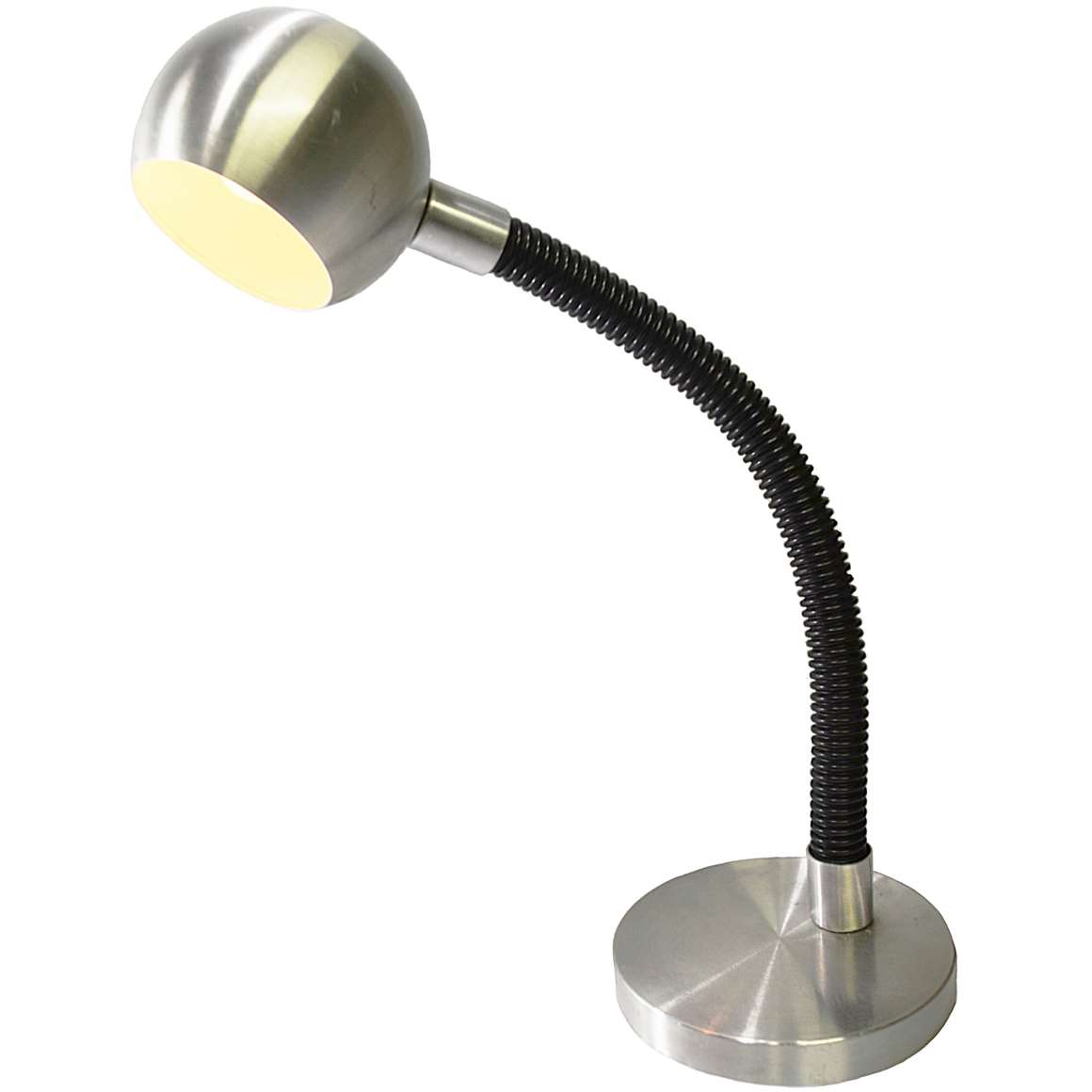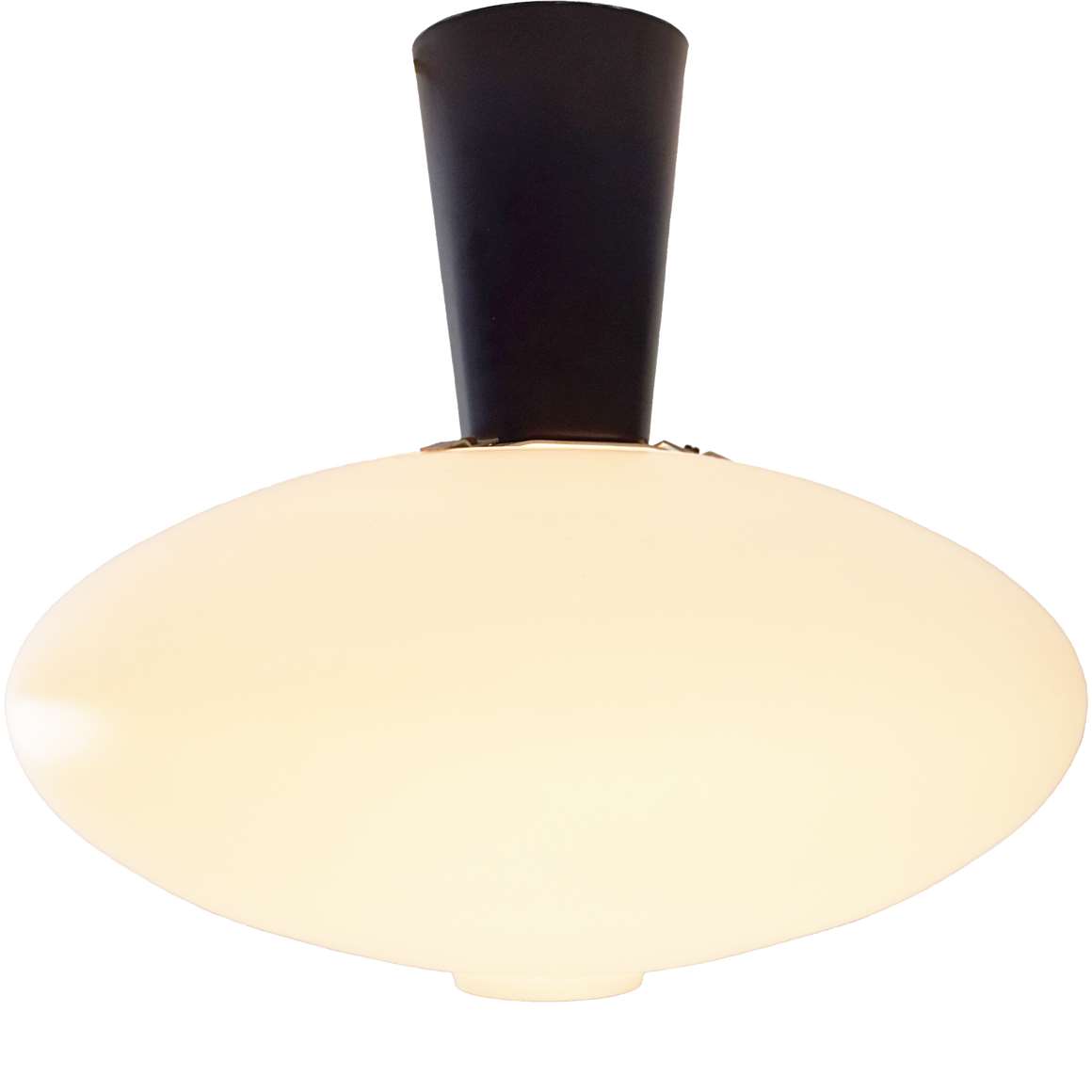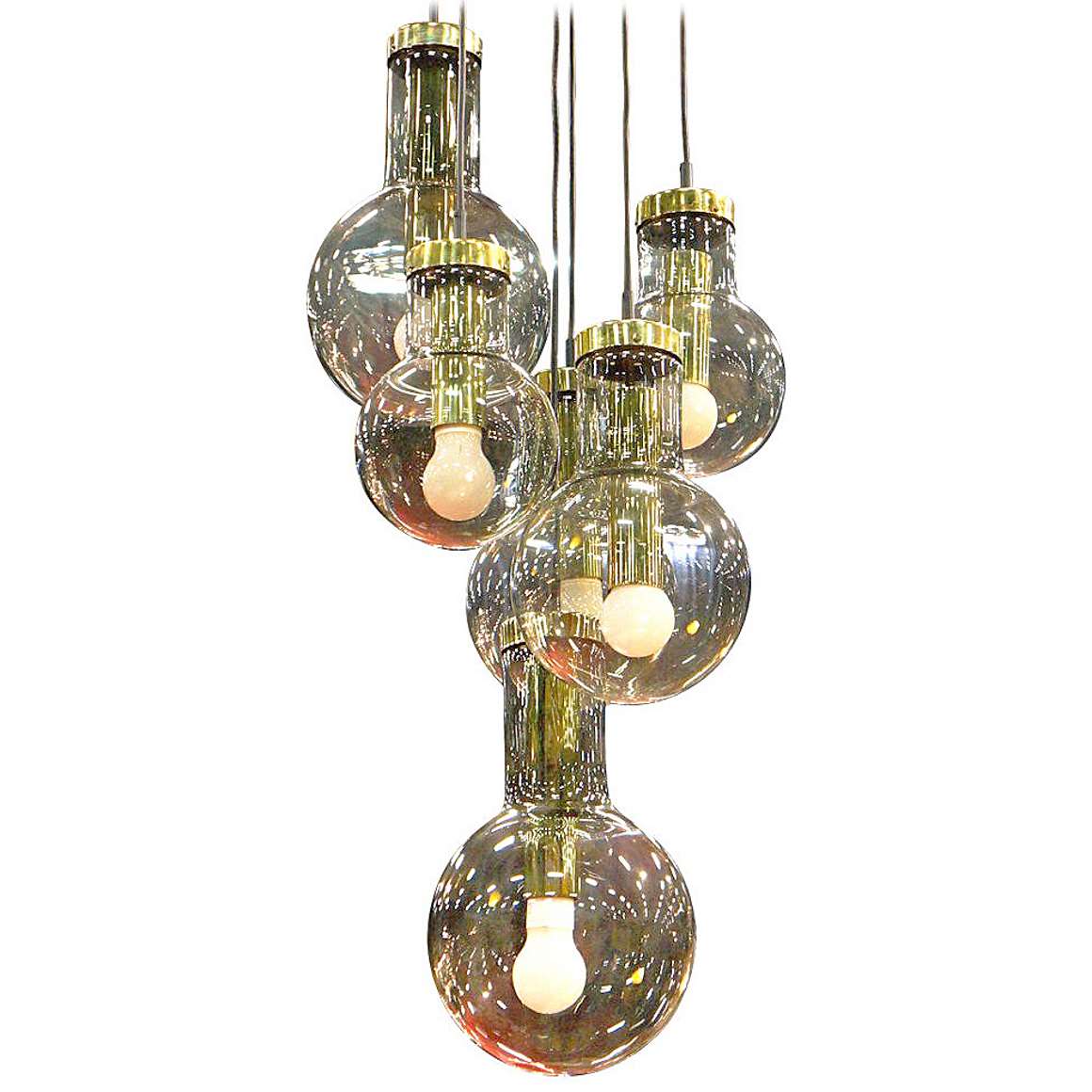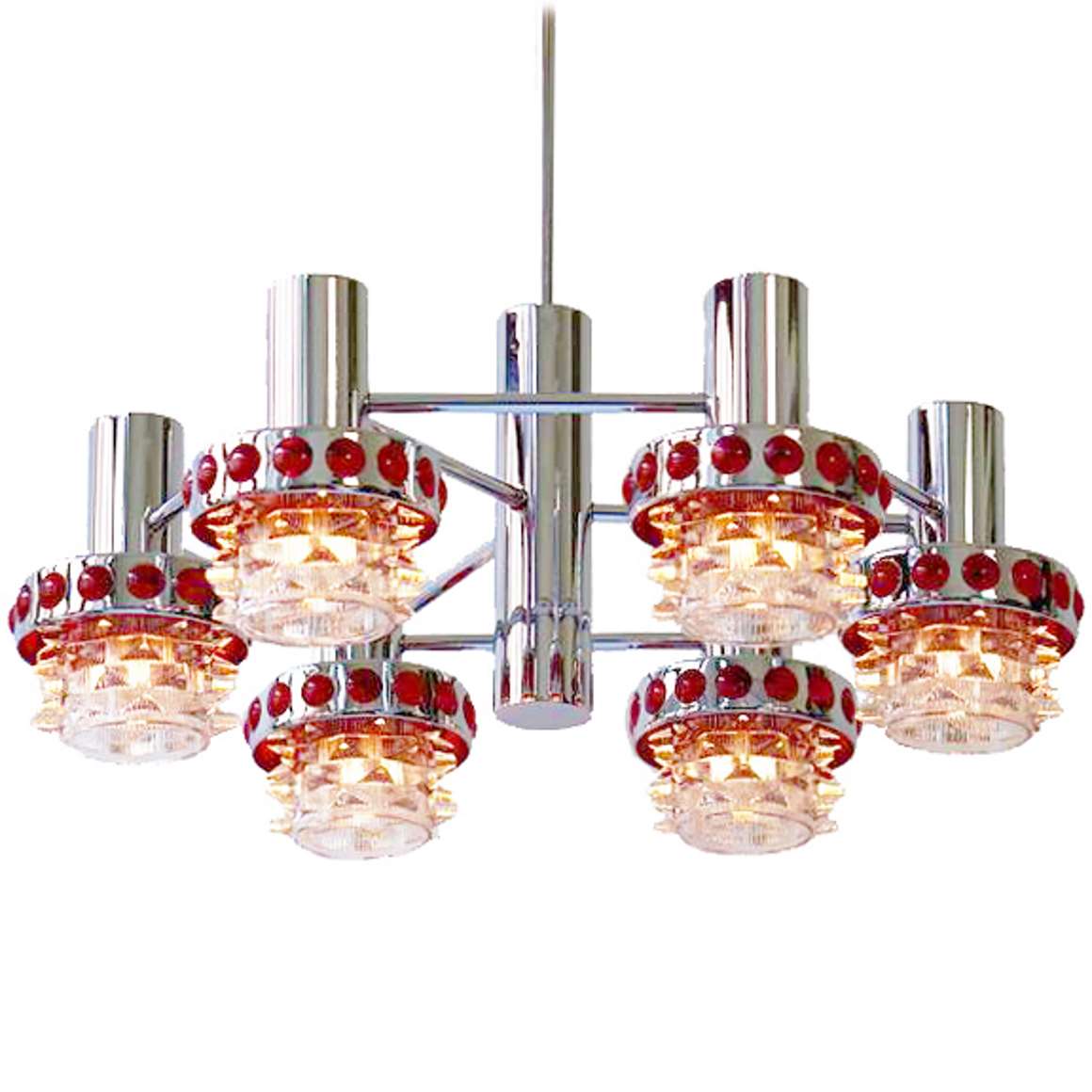Massive Night Club Pendant Chandelier – Publicity Image
Advertisement in the Dutch magazine Ideaal Wonen – September 1970 (Ideal Living)
Raak Stalactieten – Catalogue Picture
Similar, yet completely different.
Massive Night Club Pendant Chandelier
The glass parts and their Val Saint Lambert packaging.
Links (external links open in a new window)
Massive – Wikipedia (in Dutch)
Val Saint Lambert glass art in the Grand Curtius museum in Liege – Wikipedia
Vintageinfo
Many thanks to Marjan from Vintage Drachten for the beautiful pictures and the enthusiasm. Many thanks to Fred for the very important Massive publicity of this lamp.
Massive Night Club Pendant Chandelier
Materials: Black painted metal (iron) parts. Galvanised metal E14 sockets. Coloured crystal hand blown glass: blue, green, pink, blue, orange, purple, brown, white, turquoise.
Cord Length: 150 cm / 59.05” – adjustable
Width: ø 50 cm / 19.68”
Electricity: 7 bulbs E14, 7 x 40 watt maximum, 110/220 volt.
Any type of light bulb can be used, but a white/opaque or frosted one is preferred. Clear bulbs creates stripes on the glass and therefore also on the walls.
Period: 1960s, 1970s – Mid-Century Modern.
Designer: Nanny Still-Mackinney (1926-2009) – attributed.
Manufacturer: Massive, Mortsel, Kontich and Wommelgem, Belgium.
Other versions: The Massive Night Club pendant chandelier was made as single pendant lamp and also produced with 3 and 5 lamps.
For years it was said, even by Val Saint Lambert, the company that produced the glass parts, that this chandelier was made by Raak Lichtarchitectuur from The Netherlands, but it is not.
This Night Club pendant chandelier or single pendant lamps don’t appear in any catalogue of Raak. Only the Stalactieten (Stalactites) are published, as you can see. Not only they are flush mounts, but the shape is slightly different.
The question remains, is this a design by Nanny Still and made by Massive. Or is this a typical Massive interpretation of a lamp made by others. Many examples of Massive copies can be found on this website. Nanny Still has lived in Belgium for a long time, so it is possible that she designed this lamp for Massive.
Massive
Origins and Early Growth (1926–1970s)
Massive started in 1926, when Pieter-Jozef De Jaeck founded a bronze foundry in Wilrijk, near Antwerp, Belgium. Initially, the company crafted traditional bronze items such as candlesticks, crucifixes, and chandeliers in-house using established casting methods.
However, as the market evolved during the 1930s and 1940s, Massive quickly adapted to meet changing consumer needs. Therefore, the company gradually introduced more functional lighting products for households. After World War II, electric lighting became more popular across Europe.
Consequently, Massive began combining classic design with modern electrical technology. This strategic shift enabled the brand to reach new customers and grow steadily.
By the 1950s, Massive had earned a solid reputation across Belgium. Its lighting fixtures – often inspired by mid-century trends – were both affordable and practical. Moreover, they were widely available in hardware and furniture stores. As a result, they became a staple in many homes.
In the 1960s, Eddy De Jaeck, the founder’s son, joined the company. He introduced semi-industrial production techniques and optimized logistics. As a result, Massive shifted from a craft-based workshop to a mass production business. This major change laid the groundwork for international expansion.
Design Approach and Product Strategy
Massive became known for producing lighting in the style of more exclusive brands. While they didn’t make direct copies, many of their designs were clearly “inspired” by well-known models. Nevertheless, the company also released some original highlights that stood out in their own right.
In addition to their own production, Massive distributed a significant number of lamps made by other manufacturers. This strategy was not unusual at the time. Many lighting companies across Europe followed the same practice to broaden their product range and appeal to a wider market.
International Expansion and Market Leadership (1970s–2000s)
During the 1970s, Massive expanded rapidly. With Eddy De Jaeck at the helm, and later his sons Piet and Jan De Jaeck, the company grew into a multinational enterprise. To stay affordable and increase volume, Massive moved production to Eastern Europe. Later, it extended manufacturing to China. This deliberate strategy helped the brand stay competitive in a changing market.
By the 1980s, Massive had become one of the top lighting brands in Europe. Its catalog included thousands of options for both indoor and outdoor use. Furthermore, the brand balanced style, affordability, and reliability. Because of this, it gained popularity in both Western and Eastern Europe.
In the Netherlands, Massive began operations in 1962. In addition, the company opened Massive Gorinchem in 1969. This location served as the Dutch headquarters for more than 40 years. Eventually, in late 2012, it relocated to Eindhoven.
Ownership Changes and the Philips Takeover (2002–2010)
In 2002, the De Jaeck family sold Massive to CVC Capital Partners for about €250 million. This move transformed the company into part of the new group, Partners in Lighting International (PLI).
Over the next years, PLI expanded quickly. For example, in 2005, the group acquired Modular Lighting Instruments. Then, in 2006, it added Trio Leuchten from Germany. As a result, PLI marketed over 10,000 products under brands like Massive, Lirio, Trio, Aqua, and Cucina.
The company grew further by employing about 5,000 people and operating in more than 70 countries. In 2007, Royal Philips Electronics announced plans to acquire PLI. The deal closed in 2008, which strengthened Philips ‘ position in the European home lighting market.
Soon afterward, Philips rebranded all Massive stores in Belgium as Light Gallery. By 2014, the Massive name had vanished from packaging and store displays alike.
The End of an Era and the Move to Signify (2010–2024)
After the acquisition, Massive ‘s visibility declined steadily. In 2016, Philips Lighting became a separate, publicly traded company. Then, in 2018, the company rebranded as Signify. This new identity marked a fresh focus on smart and connected lighting.
Eventually, in April 2024, Signify shut down the Light Gallery website and redirected all content to its main platform. Although the Massive name no longer appears in stores, its legacy lives on. Millions of homes throughout Europe still feature its recognizable and timeless lighting designs.
Nanny Still
Nanny Elisabet Still Mc Kinney (31 July 1926 – 7 May 2009), is one of the most important modern Finnish designers of glass and ceramics. During the golden age of the Finnish art industry in the 1950s Still belonged to the great names of design.
Still was born in Helsinki and studied at Finland’s Central School of Arts and Crafts (Aalto University) and graduated in 1950. Before the end of her studdies she started working for Riihimäki Lasi (Riihimäen), Finland’s largest glass-works, and remained there until 1976.
Nanny Still designed these lamps in the late 1950s for Raak. It was a colaboration between Raak, Nanny Still and Val Saint Lambert from Belgium.
She designed many years for Raak. Several other lamps were by her hand. For instance, the “Escargot ” and the “IJspegel” (Icicle) ceiling lamps appear in the catalogue 12 from 1982.
Nanny Still married in 1958 with American George Mc Kinney and moved to Brussels in 1959.
In 1972 she won the Pro Finlandia medal and in 1954 she received the Diploma of Honor at the Triennale in Milan, Italy.
She designed for Norrmark, Riihimäki, Iitala, Heinrich Porzellan, Rosenthal Studios, Val Saint Lambert and Raak Amsterdam.
Nanny Elisabet Still Mc Kinney passed away at the age of 82 in Brussels, Belgium in 2009.
Val Saint Lambert
Val Saint Lambert is a crystal and glass factory in the Belgian city of Seraing, southwest of Liège, which produces decorative glass, glass and crystal arts and crafts. The factory is located in the abbey of Val Saint Lambert, the former Cistercian abbey of Saint Lambert. In 1826 the founders of the crystal factory settled in the favorable site, due to the large buildings available, the proximity of coal and the possibility of transport across the river Meuse. Today Val-Saint-Lambert is present in more than forty countries. One can visit the factory and see glass blowers at work.
Val Saint Lambert or Val St. Lambert was founded by chemist François Kemlin and polytechnic (Master of Science in Engineering) Auguste Lelièvre in 1826. François Kemlin had previously worked for the Vonêche crystal works in the Ardennes, also in Belgium. Val Saint Lambert is well known for its Art Nouveau and Art Deco glass pieces.
1959 award winning documentary made by the Dutch Bert Haanstra about glass-blowing.
